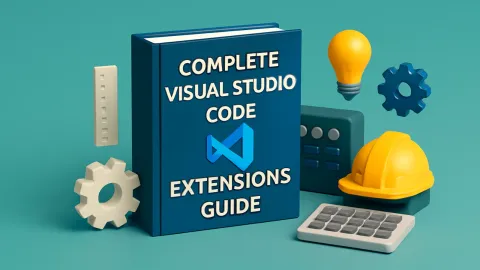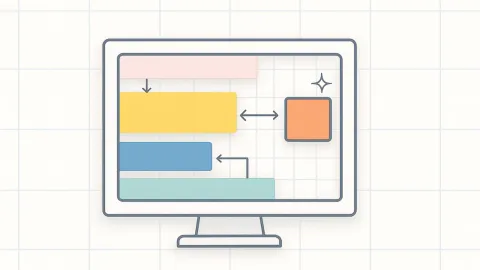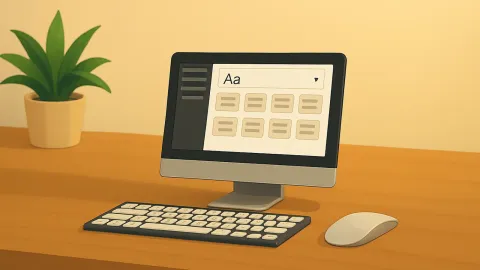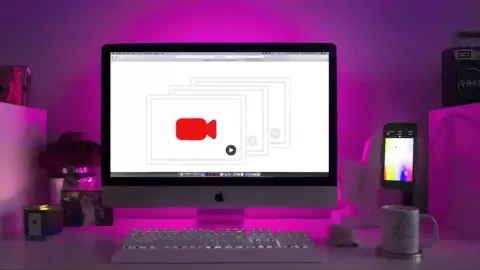CSS Hover Effects Guide: 10 Interactive Techniques
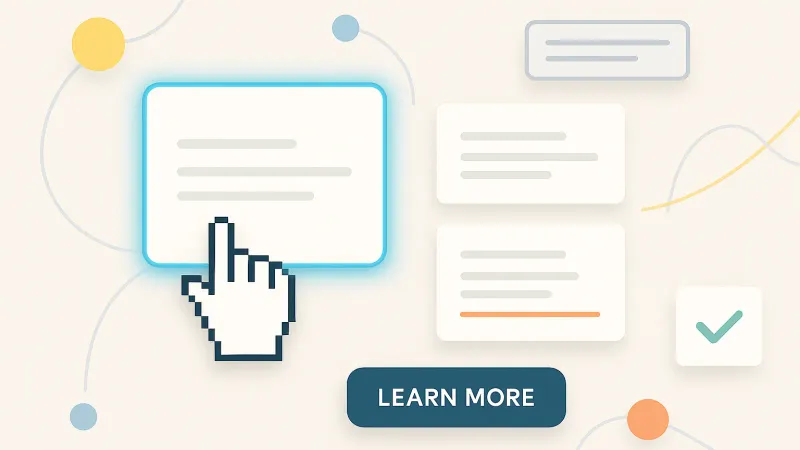
CSS hover effects are like your website’s “smile” – when users move their mouse over elements, the website provides instant visual feedback, making the entire interaction process more interesting and intuitive.
Imagine this:
- Buttons “glow” when your mouse approaches
- Text links elegantly reveal underlines
- Images slightly zoom in, creating depth
- Cards lift up, creating layers
These small details are what distinguish professional websites from ordinary ones!
What Are Hover Effects? Why Are They Important?
Hover effects serve as micro-interactions that enhance user experience through immediate visual feedback. They guide users, confirm interactions, and add personality to your website.
Why hover effects matter:
- Enhanced User Experience: They tell users “this is clickable”
- Increased Engagement: Makes the website feel more “alive”
- Attention Guidance: Highlights important action buttons
- Quality Enhancement: Shows designer attention to detail and professionalism
Real-world impact:
- 🎯 Conversion rates can improve by 15-30% with well-designed hover states
- ⚡ User engagement increases when interactions feel responsive
- 🏆 Brand perception improves with polished micro-interactions
- 📱 Accessibility is enhanced through clear visual feedback
Hover Syntax Basics (Super Simple)
CSS hover syntax is like saying: “When the mouse moves over this element, please change its appearance”
Basic Structure
.element {
/* Normal state */
color: blue;
transition: all 0.3s ease; /* Makes changes smooth */
}
.element:hover {
/* Mouse over state */
color: red;
}Key Concept: Transition is Essential
Without transition: Changes are abrupt, like switching lights on/off With transition: Changes are smooth, like using a dimmer
/* ❌ Abrupt change */
.button {
background: blue;
}
.button:hover {
background: red;
}
/* ✅ Smooth change */
.button {
background: blue;
transition: background 0.3s ease; /* This line is key! */
}
.button:hover {
background: red;
}10 Practical Hover Effect Examples
1. Basic Color Changes (Most Common)
Use case: Button and link basic interaction feedback
.color-change {
background-color: #3b82f6;
color: white;
transition: all 0.3s ease;
}
.color-change:hover {
background-color: #1d4ed8;
transform: translateY(-2px);
}🎨 Color Change Effects
2. Text Underline Effects (Professional Link Styling)
Use case: Navigation menus, article links
.underline-effect {
position: relative;
text-decoration: none;
color: #1f2937;
}
.underline-effect::after {
content: '';
position: absolute;
width: 0;
height: 2px;
bottom: -4px;
left: 50%;
background-color: #3b82f6;
transition: all 0.3s ease;
}
.underline-effect:hover::after {
width: 100%;
left: 0;
}📝 Text Underline Effects
Hover over links to see different underline effects
3. Image Zoom Effects (Common in Portfolios)
Use case: Product showcases, photo galleries, portfolios
.image-zoom {
overflow: hidden;
border-radius: 8px;
}
.image-zoom img {
transition: transform 0.3s ease;
width: 100%;
height: 100%;
object-fit: cover;
}
.image-zoom:hover img {
transform: scale(1.1);
}🖼️ Image Zoom Effects
🌄 Landscape
🎨 Design Work
💻 Project Demo
4. Card Lift Effects (Modern Design)
Use case: Product cards, article previews, feature introductions
.card-lift {
background: white;
border-radius: 12px;
box-shadow: 0 2px 4px rgba(0,0,0,0.1);
transition: all 0.3s ease;
}
.card-lift:hover {
transform: translateY(-8px);
box-shadow: 0 12px 24px rgba(0,0,0,0.15);
}🎪 Card Lift Effects
Advanced Hover Techniques
5. Typewriter Effect
Use case: Attracting attention, showcasing slogans
.typewriter {
overflow: hidden;
white-space: nowrap;
width: 0;
transition: width 2s steps(40, end);
}
.container:hover .typewriter {
width: 100%;
}6. Rotation Animation
Use case: Icons, button special effects
.rotate-hover {
transition: transform 0.3s ease;
}
.rotate-hover:hover {
transform: rotate(360deg);
}7. Background Gradient Effects
Use case: Buttons, card backgrounds
.gradient-hover {
background: linear-gradient(45deg, #667eea, #764ba2);
background-size: 200% 200%;
transition: background-position 0.3s ease;
}
.gradient-hover:hover {
background-position: right center;
}🌟 Advanced Hover Effects Showcase
Hover to see text appear
Hover to see icon rotate
Hover over button to see effect
Essential Code Snippets Collection
Here are ready-to-use code snippets for various hover effects:
Basic Button Hover:
.btn-hover {
background: #3b82f6;
color: white;
border: none;
padding: 12px 24px;
border-radius: 6px;
transition: all 0.3s ease;
cursor: pointer;
}
.btn-hover:hover {
background: #2563eb;
transform: translateY(-2px);
box-shadow: 0 4px 12px rgba(59, 130, 246, 0.4);
}Animated Underline Link:
.animated-link {
position: relative;
text-decoration: none;
color: #1f2937;
transition: color 0.3s ease;
}
.animated-link::after {
content: '';
position: absolute;
width: 0;
height: 2px;
bottom: -2px;
left: 0;
background: #3b82f6;
transition: width 0.3s ease;
}
.animated-link:hover::after {
width: 100%;
}
.animated-link:hover {
color: #3b82f6;
}Image Zoom Container:
.zoom-container {
overflow: hidden;
border-radius: 8px;
cursor: pointer;
}
.zoom-container img {
width: 100%;
height: 100%;
object-fit: cover;
transition: transform 0.3s ease;
}
.zoom-container:hover img {
transform: scale(1.1);
}Card with Lift Effect:
.hover-card {
background: white;
border-radius: 12px;
padding: 1.5rem;
box-shadow: 0 2px 8px rgba(0, 0, 0, 0.1);
transition: all 0.3s ease;
cursor: pointer;
}
.hover-card:hover {
transform: translateY(-8px);
box-shadow: 0 12px 24px rgba(0, 0, 0, 0.15);
}Gradient Animation Button:
.gradient-hover-btn {
background: linear-gradient(45deg, #667eea, #764ba2);
background-size: 200% 200%;
color: white;
border: none;
padding: 12px 24px;
border-radius: 6px;
transition: background-position 0.3s ease, transform 0.3s ease;
cursor: pointer;
}
.gradient-hover-btn:hover {
background-position: right center;
transform: scale(1.05);
}Hover Effects Best Practices
1. Performance Considerations
Recommended properties:
- ✅
transform- Best performance - ✅
opacity- Doesn’t affect layout - ✅
color,background-color- Lightweight - ❌ Avoid:
width,height,margin- Triggers reflow
2. Timing Settings
Suggested durations for different effects:
- Quick feedback: 0.15s - 0.25s (button clicks)
- General effects: 0.3s - 0.5s (color changes, translations)
- Complex animations: 0.5s - 1s (rotations, composite effects)
3. Easing Functions
/* Different easing effects */
transition: all 0.3s ease; /* Natural */
transition: all 0.3s ease-out; /* Fast in, slow out */
transition: all 0.3s ease-in-out; /* Slow in, fast middle, slow out */
transition: all 0.3s cubic-bezier(0.68, -0.55, 0.265, 1.55); /* Bounce effect */4. Mobile Device Considerations
/* Disable hover on touch devices */
@media (hover: hover) and (pointer: fine) {
.hover-effect:hover {
/* Hover effects only show on desktop */
transform: scale(1.05);
}
}5. Accessibility Design
/* Respect user animation preferences */
@media (prefers-reduced-motion: reduce) {
* {
transition: none !important;
}
}
/* Ensure keyboard focus visibility */
.interactive-element:focus {
outline: 2px solid #3b82f6;
outline-offset: 2px;
}6. Browser Compatibility
- Transitions: IE10+ (fully supported)
- Transforms: IE9+ (with prefixes)
- Animations: IE10+ (with prefixes)
- Pseudo-elements: All modern browsers
7. Performance Tips
- Use CSS transforms instead of changing layout properties
- Avoid animating width, height, margin, padding
- Prefer opacity and transform for smooth animations
- Use will-change sparingly and remove after animation
- Test on mobile devices for performance issues
Common Mistakes and Solutions
Mistake 1: Forgetting to Add Transition
Problem: Effects are too abrupt
/* ❌ Abrupt change */
.button:hover {
background: red;
}
/* ✅ Smooth change */
.button {
transition: background 0.3s ease;
}
.button:hover {
background: red;
}Mistake 2: Hover Effects Too Slow
Problem: Users won’t wait for animation to complete
/* ❌ Too slow */
transition: all 2s ease;
/* ✅ Just right */
transition: all 0.3s ease;Mistake 3: Mobile Device Issues
Problem: Touch devices don’t have true hover
/* ✅ Correct approach */
@media (hover: hover) {
.desktop-hover:hover {
/* Only works on devices with hover capability */
}
}Mistake 4: Overusing Effects
Problem: Too many animations become distracting
/* ❌ Too much animation */
.everything-moves:hover {
transform: scale(1.2) rotate(360deg) translateY(-50px);
background: rainbow-gradient;
animation: bounce-flip-spin 2s infinite;
}
/* ✅ Subtle and purposeful */
.subtle-hover:hover {
transform: translateY(-2px);
box-shadow: 0 4px 8px rgba(0, 0, 0, 0.15);
}Practice Recommendations
Start simple:
- Button color change - Most basic interactive effect
- Link underlines - Enhance text link quality
- Image zoom - Add value to galleries or portfolios
- Card lift - Modern design language
Advanced challenges: 5. Combine multiple effects (color + translation + shadow) 6. Create your own creative effects 7. Consider compatibility across different devices
Remember: The best hover effects are ones users barely notice, but make the overall experience better.Now start adding these dynamic hover effects to your website! Every small detail will make your site more professional and engaging. ✨
Key takeaways:
- Always include
transitionfor smooth effects - Keep timing between 0.15s - 0.5s for most effects
- Test on both desktop and mobile devices
- Respect user accessibility preferences
- Focus on enhancing UX rather than showing off
